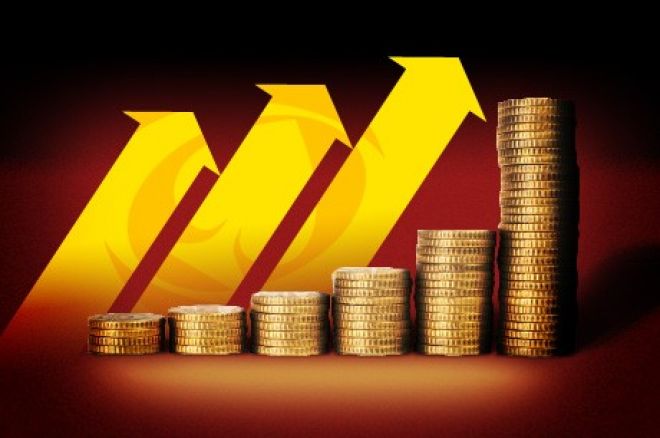Discounting a lack of skill, the number one reason a poker player goes broke is due to poor poker bankroll management. Ask any of the professional poker players for one tip about how to get started in poker and almost all will advise you to practice bankroll management.
That is fine, but what exactly is “bankroll management”? Don’t worry, PokerNews has you covered to provide you with all you need.
We’ll make sure you’re up to speed with the right poker bankroll management strategy in 2022, what you need for live poker cash games, at lower stakes, and how to start winning, play poker for real money, increase your win rate, and become a winning player!
Keep reading to learn all about the following concepts of bankroll management:
… and much, much more!
We’re confident to say this is the best series on poker bankroll management you will find on the web. But before we dive in-depth, let’s start with the basics.

Poker Bankroll Management Strategy: The Basics
Practicing sound poker bankroll management involves recognizing that the amount of money you have in your poker bankroll should always be dictating the stakes for which you play. That’s easy enough to understand in theory, but for some being able to put that idea into practice can be easier said than done.
In this article, we’ll be sharing tips regarding how to think about and manage your poker bankroll, including offering some specific strategies to help you with decisions about game selection, moving up in stakes, and cashing out.
We’ll teach you about luck, variance, when you need to be aggressive with your shots, and why the so-called ‘variance’ in poker can clean out any ill-prepared wallet in no time!
Need a refresher before we get underway? Visit the poker rules section to learn all about the basics of poker.
What is Poker Bankroll Management?
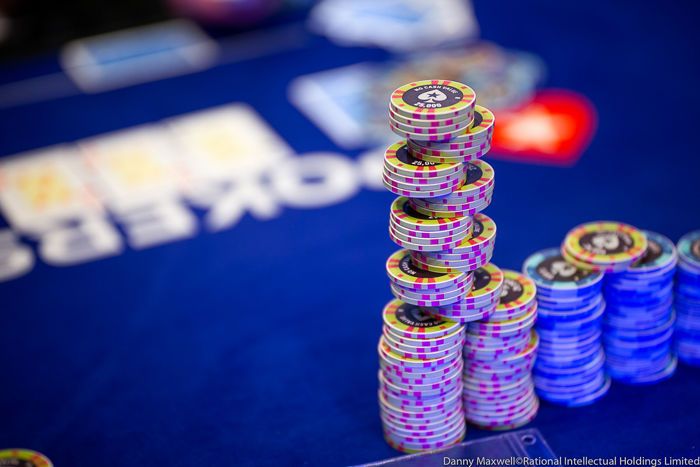
Put simply, poker bankroll management is the practice of controlling your bankroll so that you never risk more money than you can afford to lose. That means understanding and accepting the fact that variance (luck) is a part of poker and making sure that the amount of money you’ve set aside for poker can handle the swings that come with playing a high variance game.
In order to do this, proper bankroll management demands a level of discipline and restraint when it comes to how much money you put into any given poker game.
It is also important to remember that bankroll management is not just about preserving your funds; it’s also about making sure that you are playing at the right stakes for your current poker skill level.
In short: you need the right poker bankroll management strategy to win.
These are the top mobile apps to play poker for real money
Why is Poker Bankroll Management So Important?
Variance is a natural and inevitable component of poker. The amount of money you can win or lose in any given poker game – or over the course of many poker games – will always be affected by variance. In short, variance is the element of poker that makes it a game of skill and chance.
There is no way to completely avoid variance when playing poker, but you can certainly minimize its effects by practicing proper money management. This means making sure that the size of your poker bankroll is in line with the stakes you are playing at.
If your bankroll is too small to handle the swings that come with playing poker, then you are putting yourself at a significant disadvantage. On the other hand, if your bankroll is too big for the stakes you are playing at, then you are not making the most of your money.
By managing your bankroll effectively, you can ensure that the amount of money in your poker bankroll is always working for you – rather than against you.
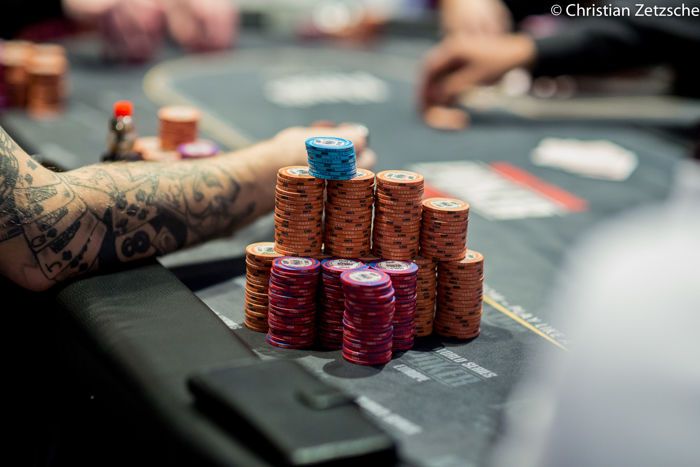
What are the Basic Rules for Poker Bankroll Management?
There are three basic tenets of poker bankroll management that all poker players should adhere to:
- 1) Only risk money you can afford to lose
- 2) Only play at stakes that are in line with your poker skill level
- 3) Be disciplined and patient when it comes to bankroll growth
These three rules form the foundation of poker bankroll management and should be followed by all poker players, regardless of their experience or proficiency. That means even the full time poker grinder looking to be an online poker pro should follow these concepts!
Want to know what the best apps are to play online poker with friends? PokerNews has you covered.
Always Remember: Your POKER Bankroll is For POKER Only!
Let’s get one thing straight: only use money for poker games that you can afford to lose in to make up your bankroll! That is one of the golden rules you need to know how to win at poker. This means that the money set aside for your poker bankroll is not needed to fund anything other than poker!
If you think you have a $2,000 bankroll, but will need to use $1,500 from it this month or next to pay an important bill, then you not have a $2,000 bankroll — you have a $500 one!
It is crucial that none of your poker bankroll is required elsewhere (not a single cent of it!) because as soon as it is, you are gambling with money you cannot afford to lose. This is a cardinal sin in all forms of gambling, including online poker. Make sure you always keep money for poker separate to minimize any significant risks to your living expenses!
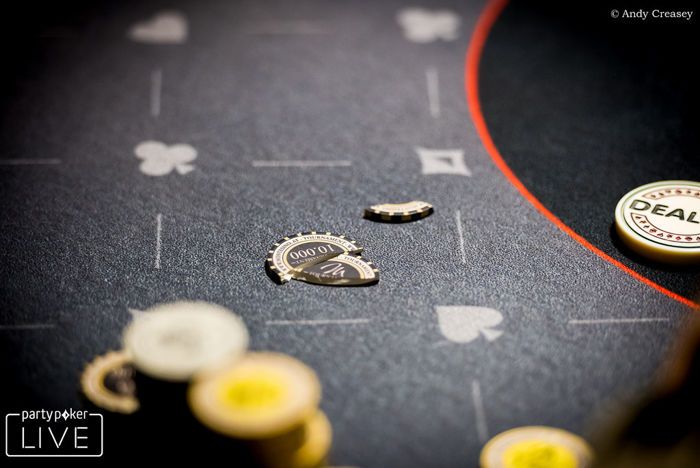
Bankroll Management Keeps You in Profitable Games
There is more to managing your poker bankroll than simply depositing a lump sum into your online poker account and playing poker with it. The size of your bankroll dictates the games you can afford to play.
Every poker player dreams of moving up stakes where there is more money to be won, but very few, if any, make plans for dropping down to the next lowest stakes. Being honest with yourself and moving down, as it’s called (lowering your average buy in), is crucial to enjoying longevity in the poker world.
Using your bankroll to determine the level you play at ensures you remain in games where you are profitable. Using bankroll management as a guide means you will have to move down in stakes if you go on a losing stretch. Start winning again and you may rebuild your bankroll to such levels that allow you to return to your previous level or move up to the next highest limits.
You will find you eventually settle in games where you are profitable and no longer need to drop down in stakes as frequently.
Poker Odds Calculator: Find out what the best poker hand is
Managing Your Poker Bankroll Prevents You From Going Broke
One purpose of our bankroll is to act as a cushion for when we lose, which will happen sometimes, even to the best players. If you sit down online at a $0.10/$0.25 cash game table with just $25 as a bankroll, then all you need to do is lose that one buy-in and you are out of the game.
If you cannot afford to replenish your bankroll then you could be unable to play poker for an extended time period. However, having several $25 buy-ins behind you means you can stay in these cash games, try to win back your money, and up your win rate.
There is no reason to go broke if you follow poker bankroll management because you will move down stakes if you lose a predetermined amount of money. Having enough buy ins for your cash games or tournament is a prerequisite. It is better to be able to play poker for the smallest stakes than to not be able to play poker at all!
How Do I Start a Poker Bankroll?
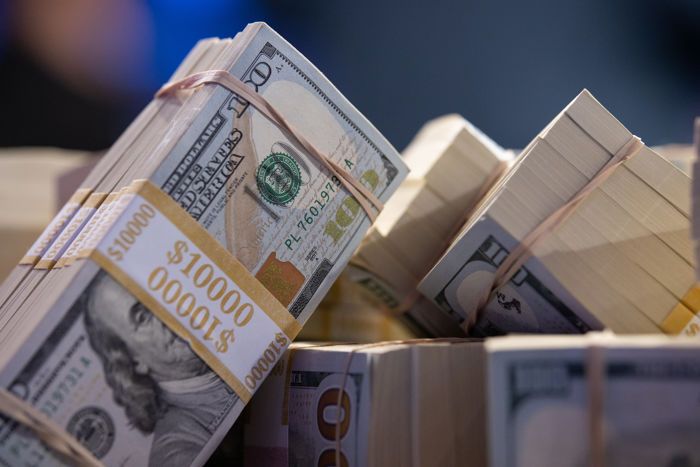
The first step to starting a poker bankroll is working out how much money you can deposit at an online poker site. Remember, your bankroll should only ever contain funds that are not required for your day-to-day life.
It does not matter if you can only afford $100 but a friend of yours is thinking about depositing $10,000. Your bankroll is personal to you and so is your poker career. Concentrate on yourself and your situation first and foremost.
Most online poker sites have cash games with $0.01/$0.02 or $0.02/$0.05 stakes, meaning you can follow proper poker bankroll management even with the smallest of bankrolls. Likewise, poker sites such as PokerStars, 888poker, and GGPoker have sit & go tournaments and multi-table tournaments with buy-ins as low as $0.50; there is no excuse for not playing poker within your bankroll’s constraints.
The best poker freerolls are here
Starting A Poker Bankroll With No Money
Some players choose to start with no funds at all and try to build a bankroll from scratch. They sign up to an online poker site, play in freeroll tournaments that are free to play (as their name suggests), and use any money won from these free games to build a bankroll from.
The now-maligned Chris “Jesus” Ferguson once famously went from $0 to $10,000 over the course of 18 months. It took Ferguson nine months or grinding freeroll tournaments and the lowest stakes cash games to reach $100 and then another nine months to reach his $10,000 goal.
Ferguson actually made it all the way to $28,000 at one stage, all from nothing but time invested and a lot of determination. It’s certainly a proper poker bankroll management strategy, but there are more tools to get double the returns or more on your poker investment.

Building A Poker Bankroll
The aim of the game is not to try to build a bankroll as quickly as possible but to build one at your own pace. It is not a race to rack up dozens of buy-ins. Concentrate on playing the best poker you can and improving your skills so you have every chance of staying at the stakes you want to play.
It may seem like an arduous task grinding micro-stakes and only adding a handful of big blinds to your bankroll each time, but at least you are making progress (and it helps your win rate per 100 hands, we promise!).
Still, it’s okay to take a shot every now and then at higher stakes. To take a shot means playing higher than proper bankroll management strategy would dictate, but as long as it’s a relatively small part of your poker bankroll, it’s fine to do so without having the fear of going broke.
Check out this helpful article with top tips on how to improve your poker play!
How Can I Build a Poker Bankroll Faster?
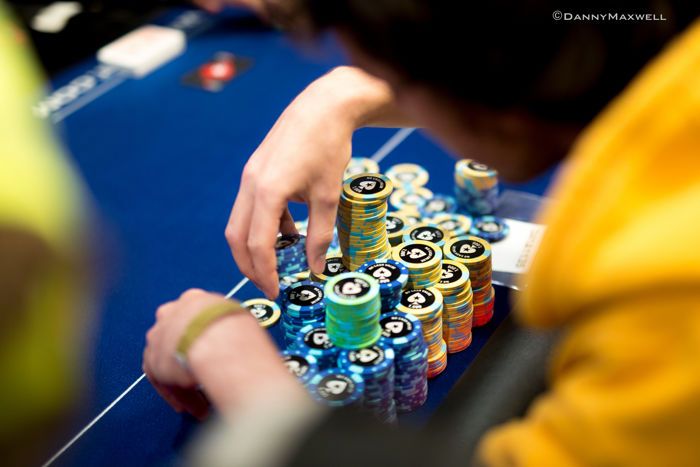
Although everyone wants to build a poker bankroll in record quick time, the process can be rather slow. Ferguson worked out he was earning a mere $0.14 per hour when he was playing freeroll tournaments during his $0 to $10,000 challenge, but his hourly rate was not important, the fact he was slowly adding to his war chest was.
Taking advantage of the welcome bonuses online poker sites offer is one way to help pad your bankroll and help it grow larger faster than simply playing poker. Every online poker site listed on PokerNews has a welcome bonus for new depositing players.
In addition, look for special promotions offered by these sites that can see extra value come your way be it through a one-off bonus, free tournament tickets, or similar. Every little helps when it comes to building your bankroll.
Enrolling in a poker site’s loyalty program is another way to help keep a steady stream of additional income flowing into your account. PokerStars’ rewards scheme awards up to 65% rakeback to its players, while all partypoker players have the chance to earn up to 60% cashback. GGPoker’s players enjoy up to 60% cashback through its Fish Buffet program, the list poker sites offering free money is almost endless.
How Many Buy-ins Should My Poker Bankroll Be?
How much of a poker bankroll you should have depends on a number of factors, which we’ll teach you in this article. These include the format of the game you play, your playing style, and your tolerance for swings (good and bad). For example, a short-handed (6-max.) no-limit Texas Hold’em cash game player can play from a smaller bankroll than can a pot-limit Omaha cash game player because PLO tends to have wider swings (or “variance”). Similarly, PLO cash game players can play from a lesser bankroll than multi-table tournament players can.
The table below shows the recommended number of buy-ins for the most common game types currently played online. (Note: bankroll recommendations for online games differ from those for live games.) Try to never have more than 5% of your entire bankroll in play at any one time. Reduce this number further if you are less risk-averse.
In the case of poker tournaments, both online and live, the numbers listed below refer to the number of tournament buy-ins. Thus if you like to play $5 MTT’s, a number of 100 (as a minimum) refers to having $500 in your bankroll with which to play.
Meanwhile, for cash games, the numbers refer to the number of buy-ins into the game wherein a buy-in represents the maximum amount allowed in the game. In other words, if the $0.10/$0.25 NLHE game (the $0.10/$0.25 representing the blinds), you like to play allows a maximum buy-in of $25, a figure of 100 blinds refers to having $2,500 in your bankroll with which to play. (also referred to as bb 100).
A Quick Guide to Poker Bankroll Management
| Game (Online) | Minimum | Medium | Cautious |
|---|---|---|---|
| No-Limit Hold’em (6-max.), cash game | 30 buy-ins | 50 buy-ins | 100 buy-ins (bb 100) |
| No-Limit Hold’em (full ring), cash game | 25 | 40 | 75 |
| Pot-Limit Omaha (6-max.), cash game | 50 | 100 | 150 |
| Pot-Limit Omaha (full ring), cash game | 30 | 50 | 100 |
| No-Limit Hold’em, 9-player sit-n-gos | 30 | 50 | 100 |
| No-Limit Hold’em, 45-player sit-n-gos | 50 | 100 | 150 |
| No-Limit Hold’em, 180-player sit-n-gos | 100 | 200 | 500 |
| No-Limit Hold’em, multi-table tournaments | 100 | 200 | 500 |
| No-Limit Hold’em, multi-table tournaments (large field) | 200 | 400 | 600 |
You may be surprised at the figures you are seeing in the above table, but those are the recommendations often given in response to (aspiring) poker players asking how large their bankrolls should be. Feel free to play around with the numbers and find an amount that suits you and your current situation.
On average, these guidelines and tools should help you in live and online games to manage the often brutal variance that creeps up in poker. Make no mistake: even the very best poker players in the world see massive swings!
No matter how skilled you are: to deal with variance in poker, you need to have proper poker bankroll management strategy, regardless of stakes.
Finding Your Comfort Zone
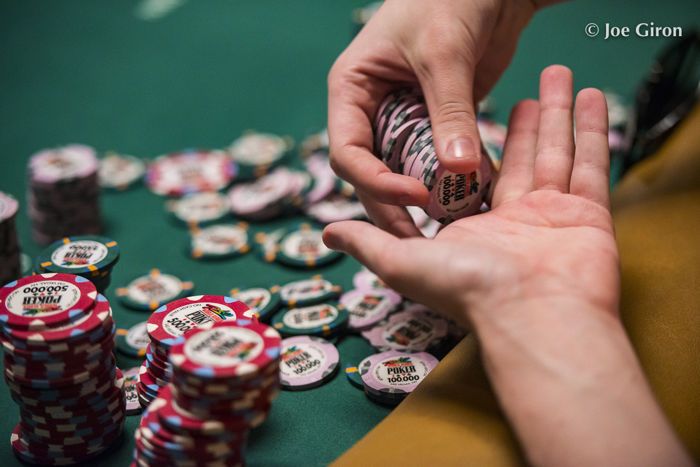
Some poker players prefer playing with a larger bankroll because they need it for their favorite poker games and do not wish to have to drop down in stakes at any point. This is particularly important if you play poker for a living where dropping down stakes limits the amount of money you can possibly win somewhat. You may want to play from a larger bankroll if you would have issues redepositing should you go broke.
Others may want to play with a smaller bankroll in an attempt to climb the stakes faster, but this increases the risk of your needing to move down levels or maybe even going broke. If you do not mind jumping around the various stakes on a regular basis, or can afford to replenish your bankroll if everything goes wrong, a smaller bankroll could work for you.
Remember: it’s all about personal preference and tolerance for risk.
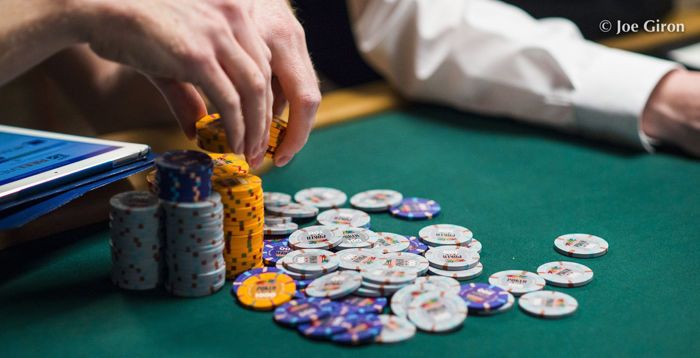
Completing the Poker Puzzle
Finding the right poker bankroll for you is important, but remember that it’s just one part of the poker puzzle. You also need to have a good poker strategy and be well-versed in the game you are playing. Bankroll management is an important skill, but it will not do you much good if you do not have the poker skills to match.
Make sure you are putting in the necessary hours at the poker table and studying the game so that you can make the most of your bankroll, whatever size it may be.
In the next few articles, we will give you more bankroll management tips, including how and when to move up stakes, a cashout strategy, and much more!
Looking to sharpen your game before sitting at the online tables? Subscribe to the PokerNews newsletter to receive a free copy of the Ultimate Beginner’s Guide to Texas Hold’em, as well as the latest poker strategy, news and special offers.
Poker Bankroll Management FAQ
What is poker bankroll management?
Poker bankroll management is a term used to describe managing the funds you have available to play poker. It determines which stakes and games you can play while limiting your chances of going broke.
How do you build a poker bankroll?
Everyone is different when it comes to building a poker bankroll. Some players like to start with zero funds and play freerolls to try win money for their bankroll. Others are in a position to make a one-time deposit and use those funds to play poker and climb the various stakes as they win more money.
How much money should I have in my poker bankroll?
There is no one-size-fits-all answer to this question, as the size of your poker bankroll will vary depending on your poker skill level and the stakes you are playing at. However, a good rule of thumb is to have between 50 and 100 buy-ins for the stakes you are playing at.
What should your poker bankroll be for $1/$2 No-Limit Hold’em?
There is a rule of thumb that says you should ever have more than 5% of your poker bankroll in play at any one time. This equated to a 20-buy-in minimum for cash games. Twenty buy-ins at $1/$2 is $4,000. However, you may want a larger bankroll and that is perfectly OK.
How do you manage a poker bankroll?
Managing your poker bankroll is relatively simple and involves moving up or down stakes depending on how much money is in your bankroll. The money in your poker bankroll determines the stakes and games you can play and not vice versa.
Why is poker bankroll management strategy important?
Following solid poker bankroll management is important for several reasons. First, it ensures you only gamble with money you can afford to lose. Second, it keeps you in games and at stakes in which you are profitable. Third, bankroll management vastly reduces the likelihood you will go broke.
What is variance in poker?
Variance is the up-and-down movement of your poker bankroll. All poker players experience variance to some degree, but proper bankroll management can help lessen its effects.
Why is poker bankroll management strategy important?
Following solid poker bankroll management is important for several reasons. First, it ensures you only gamble with money you can afford to lose. Second, it keeps you in games and at stakes in which you are profitable. Third, bankroll management vastly reduces the likelihood you will go broke.
How do I move up in poker stakes?
Moving up in poker stakes can be tricky, as it’s important to make sure your poker bankroll can handle the increase in buy-ins. There is no precise formula, but a good rule of thumb is to move up when you have at least 50 buy-ins for the new level.
